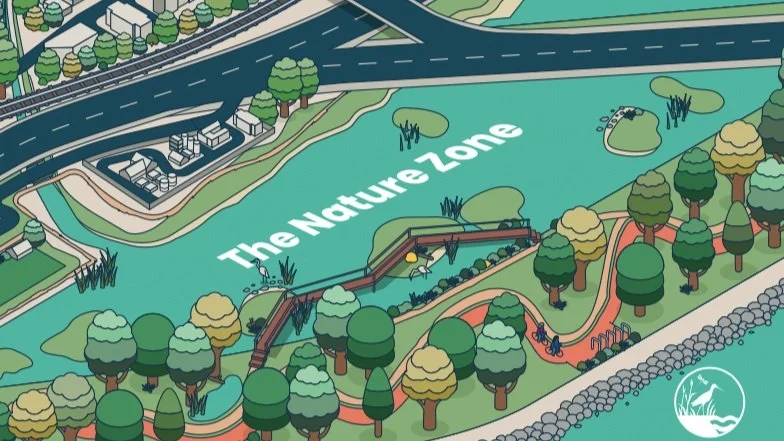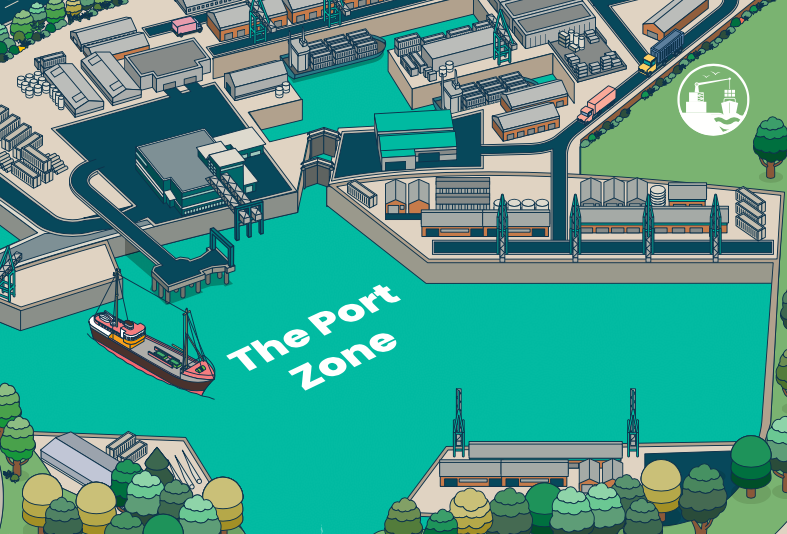Lagoon Hull: Your questions answered
Lagoon Hull is our city’s greatest regeneration opportunity – and we are finding more than ever before that people are interested in what it could mean for them.
We recently launched ambitious zoning plans to provide a more detailed look at how Hull could look once the transformative project is completed. Since then, questions have been pouring in from the public who are desperate to learn more.
The project continues to move forward with the aim of providing answers to some of the biggest dilemmas around our future. How can we adapt to make Hull a more desirable place to live, work and play? How it can retain our top talent and stop them from wanting to move away? And what steps we can take to protect ourselves from environmental impacts?
To all of those, Lagoon Hull is the answer.
Our project team is still planning and engaging with key stakeholders to ensure it delivers for everyone and we are continuing to spread the word on our social media channels and in our new monthly newsletter about what it means for the region. You can sign up here.
Here are some of the most common questions we’ve answered over recent months:
Q. What are the next steps and timescales?
A. The next steps are to hold sit-down talks with the relevant authorities including councils and Government to make clear the benefits of the project. We are aiming to raise £25m via a mix of public and private funding streams to conduct the next stage of detailed feasibility studies and put the project before planners. This process should take around five years. It will then take a further five years to construct.
Q. I don’t understand this project. I’m just hearing business as usual but we need a new story which isn’t about wealth creation for a few. How is this going to be any different?
A. The Lagoon will transform Hull and the Humber for everyone – from small, medium and large businesses to the people who call Hull their home. It will provide further flood protection for generations to come, create 19,000 skilled and semi-skilled jobs and provide other economic benefits by making Hull a place where people want to live. This isn't a project for a few, it's for everyone.
Q. Presumably, by protecting Hull from flooding you would also protect a large area of low-lying land further upstream. Doesn’t this make it an idea that should seriously be considered?
A. The short answer is: Yes! The entire region will benefit, including land currently drained by the River Hull. The river will be made non-tidal which will mark an end of only using the water during high tide. While this will benefit our tourism industry, setting a consistent water level also means it will not swell too high either. However, during periods of heavy rain events, the water level within the Lagoon itself can be lowered to increase capacity.
Q. The plans will block existing open views of the estuary with a massive concrete motorway and pollute the promenade with traffic fumes, especially the east end of Victoria Dock. Won’t this drive people and businesses away from the waterfront?
A. The changes will allow the transformation to a new city waterfront we can all engage with and that provides new activities and perspectives of the estuary. Moving all of the through traffic out of the city centre will also improve air quality. Taken together, we believe these will provide a key driver to bring people and businesses into the city.
Q. Prevailing winds will blow car and truck noise across the waterfront city centre. It looks beautiful as it is. The flood relief works have just been finished and the A63 improvements are still ongoing. The cost must have been millions of pounds. If you build a Lagoon, will this mean the money will have been wasted?
A. The existing plans for the upgrade of the A63 at Castle Street will provide much needed improvements for traffic flow and improved air quality, however, we need to look further ahead as more capacity will be required if we are to continue to grow both our industrial and port sectors.
Traffic is expecting to grow in number in the coming decades to support development to the east of the city, meaning an increased need for through traffic to be able to bypass Hull which will also support the improvement of air quality within the city.
The recent flood protection works have also been vital to protect the city today, but more will be needed as we look to the next century and significant sea level rises.
Q. I'd like to see it happen but what about also incorporating the south bank as well? Why limit these works to Hull? The amount of traffic crossing the Humber Bridge every day shows how close the two sides of the estuary really are. The Lagoon could really build on this and create a true sustainable powerhouse of the UK, let alone the North.
A. The project will help to build on the existing relationships between the two sides of the estuary, especially in the renewables sector which is already thriving in East Yorkshire and North/North East Lincolnshire. It will increase growth and job creation across the entire region and support the development of the Northern Powerhouse at its eastern end.




